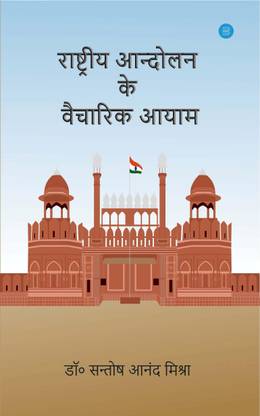(D) ANSWER THE FOLLOWING QUESTION IN BRIEF--
1.QUESTION
Mention the main demands of the radical group of the congress.
ANSWER-
1.To drive away the foreigners as soon as possible.
2.To believe in action, protests, hartals and Slogans.
3.To propagate Indian culture and Hinduism.
2.QUESTION
State main achievements of Lucknow pact of 1916.
ANSWER-
1.The Moderates leader and Radicals leader unite.
2.The leader of congress party and Muslim leader unite.
3.They jointly demanded self rule for India.
3.QUESTION
Describe the contribution of Subash Chandra Bose in the freedom struggle for freedom.
ANSWER-
Subash Chandra Bose was well known figure during the freedom struggle. He was ready to join hands with enemies of the British to get the British out of India. His popular slogan "You give me blood and I will give you freedom". He organized Indian National Army(INA).
4.QUESTION
List the main features of the Lahore session of Congress in 1929.
ANSWER
1.The Lahore Session of congress presided over the Jawahar Lal Nehru.
2.The historic resolution of Purna Swaraj or Complete Independence was passed.
3.It was decided to celebrate 26 January 1930.
5.QUESTION
Explain any three main provisions of the Govt of India Act 1935.
ANSWER
1.The head of the Central administration was the Governor General. He continued to have the Supreme power.
2.The member state of Federation had autonomy with respect to subjects delegated to them.
3.The Centre continued to control Defence , internal affairs and Railways.
4.A federal Court was established for provinces and princely states.
(E) ANSWER THE FOLLOWING QUESTIONS
1.QUESTION
Who were the Moderates? What were their main demands?
ANSWER
The Moderates were against taking extreme actions. They had deep faith in the good intention of the British govt. They adopted moderate ways to pursue their goals.
Their main demands were-
1.To have representative in the whole country for the welfare of the people.
2.To create provincial legislative councils in all provinces.
3.To hold civil service examination in India.
4.To ensure the growth of Indian industries and handicrafts.
5.To stop the drain of wealth to British.
6.To end the exploitation Indian resources and people.
2.QUESTION
Describe the role played by any two mass movements towards intensifying the struggle for freedom.
ANSWER
1.Non Co-operation 1920-1922
Mahatma Gandhi said that the British rule was established and survived in India with the co-operation of Indians. The congress session at Nagpur ratified Gandhi's call for Non co-operation.
Action-
1.Boycott of legislatures.
2.Boycott of Govt. offices and courts.
3.Bon fires of foreign goods.
4.Boycott of school and colleges by the students and the teachers.
In this movement all the section of the society unite and fight with British.
2.Quit India Movement
Mahatma Gandhi gave a final blow to the Britishers on 8 Aug. 1942 by launching the Quit India Movement.
Gandhi raised the slogan "Do or Die"
Gandhi and main leaders of congress sent to jail within 24 hours.
About 90 thousand people were arrested and 1000 were killed.
3.QUESTION
Why did Gandhijee gave a call to start Non- co-operation Movement? Why activities gave momentum to this movement?
ANSWER
The Non Co-operation Movement stated in 1920.
Protest activities that were used in Non co-operation Movement were---
1.Titles and honours given by the British were renounced.
2.Legislatures were boycotted.
3.Boycott school and Colleges.
4.Boycott Govt. offices and Courts.
5.Bonfires foreign goods.
In Non Co-operation Movement took a violent turn in Chauri Chaura in Utter Pradesh in 1922. The police fired upon a group of demonstrators. The agitated mob set a police station on fire and burnt 22 policemen alive so, Gandhijee call off Non- co-operation Movement.
4.QUESTION
Describe two main features of -
a) Morley Minto Reforms 1909
b)Govt. of India Act 1919
c)Govt. of India Act 1935
ANSWER
a) Morley Minto Reforms1909
Muslim were granted separate electorate.
The number of members in the central Legislature council was raised from 16 to 60.
b)Govt of India Act 1919
The no of elected members was increased in Legislature Assembly.
The system of dual Govt was introduced.
All power given under the control of the Governor.
The Indian Ministers were given the charge of education and health.
c)Govt of India Act 1935
The head of the Central administration was the Governor General.
The central continued to control defence internal affairs and Railways.
A federal court was established for provinces and princely states.
5.QUESTION
"Quit India Movement was the last blow to the British rule in India" Give arguments in support this statement.
ANSWER
Mahatma Gandhi gave a final blow to the Britishers on 8 Aug 1942 by launching the Quit India Movement.
Gandhijee raised the slogan "Do or Doe" which spread among the common mass very soon.
Gandhijee and farmers leaders of congress were sent to jail within 24 hours.
In this movement several areas people set up their own government.
British tried to repress these developments severely. About 90 thousands people were arrested and 1000 were killed in police firing.
So, we said that Quit India Movement was the last blow to the British rule in India.
......................................................................................................................................................................................................................................................................................................................................................................................................................................................................................................................................










0 Comments
Thank you